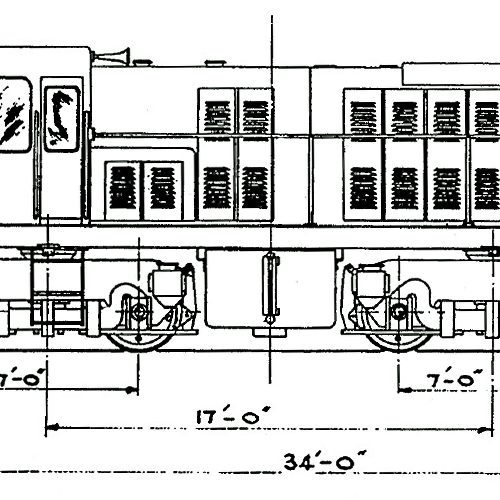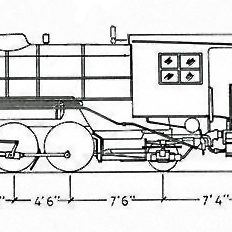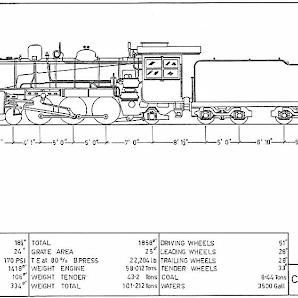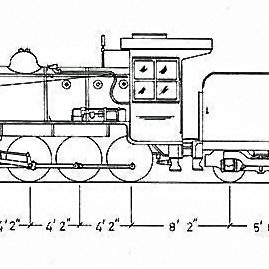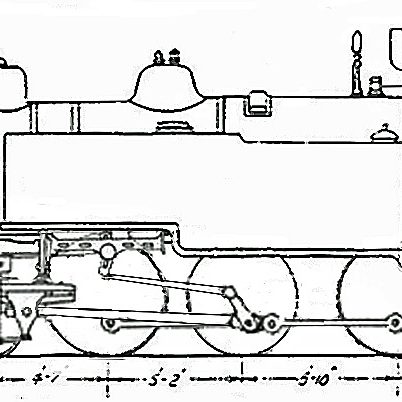The railways were in a run-down state after World War 2 due to deferred maintenance and many locomotives and items of rollingstock, that would have otherwise been retired, had been kept in service to handle the huge demands. A massive rehabilitation programme was instituted to overcome these problems and orders were placed for new locomotives and rollingstock. Such was the seriousness of the situation that some repairs to locomotives were outsourced to private enterprises and new locomotives were sourced from interstate and overseas suppliers.
Orders were let in November 1948 for 40 engines, 20 each to be supplied by Vulcan Foundry in United Kingdom and Walkers Ltd, Maryborough Queensland. The locomotives were designed at Ipswich as an improvement on earlier successful B18¼ Class. Vulcan Foundry subsequently suggested some modifications to the original details and these were adopted. They incorporated enhanced features including longer travel valves, improved steam passages and roller bearings. They produced the same tractive effort as the B18¼ but were slightly heavier. The BB18¼ tenders were also larger with increased coal and water capacity. The contract with Vulcan Foundry was increased by another 15 in August 1949.
The locomotives built by Vulcan Foundry were shipped to Pinkenba (Brisbane) with two engines arriving on board “Clan Macaulay” in February 1951. N°1018 was the first of the class to enter service on 22nd February 1951 and the remainder of the orders was received by August of that year. Walkers Limited experienced difficulties in fulfilling their contract due to the shortage of material and did not deliver its first engine until 1955. Delays in these deliveries resulted in the last of the order, N°1089, not entering service until 13th March 1958 and thus becoming the last mainline steam locomotive to be built and placed in service in Australia. In fact, Walkers Ltd had delivered some diesels to QR before completing this order.
Although similar in appearance to the earlier B18¼ Class, the newer engines have a number of visible distinguishing features, including the mounting of WH pump on fireman’s side, stainless steel rather than brass boiler bands, SCOA-P coupled wheels and pressed steel sand box. Engines constructed by Walkers Limited used electricity for the light on the rear of the tender, for side lamps and to illuminate the motion. The boilers on the engines built by Walkers Limited were interchangeable with the B18¼ but the Vulcan built ones were not. This problem was overcome in the mid-1950s with design of a ‘standard’ boiler suitable for both classes.
The class proved to be a most successful design, capable of speeds in excess of 60 mph and was popular with crews. Initially they were used on long distance passenger and mail trains and on some Brisbane northside suburban passenger services. To fulfil these duties, members of the class were allotted to Mayne (Brisbane), Ipswich, Toowoomba and the along the North Coast Line at Maryborough, Rockhampton, Bowen and Townsville. The number of engines allocated to these depots varied over the years according to traffic requirements. Mackay became home for several of the class during the late 1960s with its allocation gradually increasing to nine engines in 1969.
Their area of operations was restricted due to the light track structure of many lines. In the southern part of the state, they could run from Brisbane to Wallangarra and between Toowoomba and Roma. They were not permitted to work beyond Emerald, later Bogantungan, to the west of Rockhampton, nor beyond Charters Towers west of Townsville. This latter limit was extended to Hughenden in 1958. They eventually were allowed to run between Brisbane and Cairns after the section of that line between Babinda and Cairns became available to them in 1952.
Arrival of the first diesels in 1953 resulted in them relieved of some of their most impressive tasks including the Sunshine Express (Brisbane–Cairns Mail Train), predecessor of air-conditioned Sunlander. Increasing numbers of this new form of motive power gradually saw them being relegated to lesser duties and ultimately cut short their careers. As a result, many spent much of their lives hauling goods trains. They were last used on long distance country passenger trains in 1967 and continued to haul some suburban passenger trains in Brisbane until 1968.
The first two engines in the class were withdrawn in 1967. Numbers then declined rapidly with the last eleven class members being written off in 1970. Despite being a modern design, they had a short life with some being in service for less than twelve years. With part of this brief lifespan being spent on slower less important trains, class members only achieved low mileages compared with their forebears. The last engines in service were N°1012, 1030, 1037, 1039, 1070, 1073, 1081 and 1084 at Mackay and N°1088 at Ipswich.
The engines were painted Hawthorne Green with carmine red trimming when introduced. However, a decision was made in 1967 that in future all steam locomotives receiving workshops attention were to be painted standard black with red trim. As a result of this edict, at least four members of the class received this new colour scheme.
Today, three engines remain in working order. QR Heritage Division retains N°1079 and N°1089, while N°1072 is at Zig Zag Railway.
BB18¼ N°1072
N°1072 was the 540th locomotive constructed by Walkers Limited Engineers, Maryborough at a cost of ₤45,665/18/- ($1,563,873.37 at today’s values). The engine successfully completed trials on 24th January 1956 and after being weighed, officially entered service on 26th January 1956. After a brief period at Mayne, she was transferred to Toowoomba in the South Western Division for the remainder of her career. One of her significant duties there was hauling the Wallangarra Mail. This train was previously known as the Sydney Mail and was the most prestigious train in the state prior to the opening of the Kyogle line in 1930. Another important task was working the Toowoomba – Roma passenger trains. This journey of 217 miles (350km) was one of the longest steam workings in the state. Like the other twelve members of her class at Toowoomba, much of her time was spent hauling goods trains. Agricultural products and livestock accounted for a large proportion of these loads. Consequently, there were seasonal fluctuations in traffic and locomotive mileages reflected these variations. The highest monthly mileage achieved by engine N°1072 was 5033 (8100km) in October 1965. The figures were considerably lower in many other months and declined rapidly after 1967.
Locomotives
-
Wheel arrangement
4-6-2
-
Cylinders (diameter X stroke) ins. (4)
18¼ x 24
-
Rigid Wheel Base
10'0"
-
Length over Buffers
60' 2⅞"
-
Coupled Wheels diameter ins.
51
-
Axle Load
12.1
-
Boiler Pressure psi
170
-
Heating Surface of tubes - sq feet
1418
-
Heating Surface total - sq feet
1858
-
Grate area - sq feet
25
-
Weight - adhesive - tons
36
-
Weight Engine
58
-
Coal capacity - tons
10.35
-
Tractive Effort - lbs. (85%)
22648
-
Factor of Adhesion
3.59
-
Valve Gear
Walschaert
-
WH Pump
7-80"
-
Brake Valve
A6-ET
